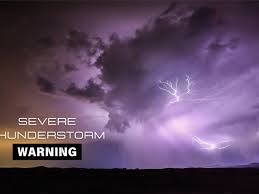Understanding Severe Thunderstorm Warnings and Their Impact

Introduction
In recent days, regions across the UK have been under severe thunderstorm warnings as the summer storms continue to batter various areas. These warnings are crucial in keeping the public informed about impending severe weather conditions, which can pose significant risks to safety, infrastructure, and the environment. Understanding the implications of such warnings and the importance of preparedness is essential for residents dealing with unpredictable weather patterns.
What is a Severe Thunderstorm Warning?
A severe thunderstorm warning is issued by meteorological authorities when a storm is capable of producing damaging winds of 58 mph or greater, hail of 1 inch in diameter or larger, or a tornado. These storms can develop swiftly, making it imperative for the public to stay alert. In the UK, the Met Office is responsible for issuing these warnings, and they use advanced radar technology and forecasting models to identify potentially severe storms.
Recent Weather Events
On the 14th of October 2023, the Met Office issued several severe thunderstorm warnings across central and southern England. These warnings came as forecasters predicted heavy rainfall, potential flooding, and damaging wind gusts. In cities like London and Birmingham, residents experienced torrential rain, leading to localized flooding and travel disruptions. Emergency services were put on standby as conditions deteriorated, with many urging the public to avoid unnecessary travel.
Safety Precautions During Severe Thunderstorm Warnings
When a severe thunderstorm warning is in effect, it is essential to take the following precautions:
- Stay indoors and avoid using electrical devices.
- Keep an eye on the local weather updates through trusted sources like the Met Office.
- Secure outdoor items that could become projectiles in strong winds.
- If necessary, seek shelter in a designated safe area away from windows.
Awareness of these precautionary measures can significantly mitigate the risks associated with severe storms.
Conclusion
As climate change continues to influence extreme weather patterns, the frequency and intensity of severe thunderstorms are likely to increase. This trend emphasises the need for effective communication of warnings and public understanding of meteorological alerts. Staying informed and prepared can save lives and minimize damage during severe weather events. For the general public, being aware of the significance of severe thunderstorm warnings is more important than ever, especially as the winter season approaches, which could potentially bring more severe weather conditions to the UK.









